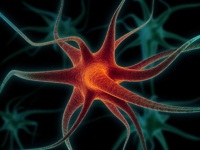 Psychiatrists Shift Away From Providing Psychotherapy
Psychiatrists Shift Away From Providing Psychotherapy
Marlene Busko
Medscape Medical News 2008. © 2008 Medscape
August 6, 2008 — A declining number of office-based psychiatrists in the United States are providing psychotherapy, according to results from a national 10-year survey.
Analysis of data from the National Ambulatory Medical Care Survey (NAMCS) showed that the percentage of office visits to psychiatrists that involved psychotherapy provision dropped from 44% in 1996–1997 to 29% in 2004–2005.
“There were fewer psychiatrists who specialized in psychotherapy in 2005 than in 1996, and the psychiatrists who did provide psychotherapy for all of their patients had different profiles from other psychiatrists,” study coauthor Ramin Mojtabai, MD, then from Beth Israel Medical Center and now from the Johns Hopkins Bloomberg School of Public Health, in Baltimore, Maryland, told Medscape Psychiatry.
Psychiatrists who continued to provide psychotherapy to all their patients tended to be in solo practices in the Northeast with patients who were older than age 25 years, white, self-paying rather than paying via insurance, and diagnosed with less severe illnesses, such as dysthymia or personality disorders, he noted.
“I did not expect to find this strong a relationship between provision of psychotherapy and either insurance on the 1 hand or region on the other hand,” he said.
The study, by Dr. Mojtabai and coauthor Mark Olfson, MD, from Columbia University Medical Center and New York State Psychiatric Institute, in New York, is published in the August issue of the Archives of General Psychiatry.
Financial Disincentives
Practice guidelines recommend psychotherapy alone or with medications for psychiatric disorders such as major depression, posttraumatic stress disorder, and bipolar disorder.
Yet new research suggests changes in reimbursement policies and the introduction of newer psychotropic medications are contributing to a decline in the provision of psychotherapy by US psychiatrists.
“A recent study showed that for every 45 minutes of psychotherapy, physicians are reimbursed less than if they had three 15-minute medication management visits, so insurance policies have a built-in disincentive for psychiatrists to provide psychotherapy,” said Dr. Mojtabai. He added there are many more types of antipsychotic medications available now than there were 10 years ago.
In light of these changes as well as the debate about the place of psychotherapy in contemporary psychiatry practice and training, the investigators examined trends in provision of psychotherapy by office-based psychiatrists.
They analyzed data from a 1996–2005 NAMCS survey of a national sample of US office-based psychiatrists, which is based on treatment offered in a typical week.
Psychotherapy visits were defined as those lasting longer than 30 minutes. The survey provided patient demographic information as well as data about payment type, psychiatric diagnosis, and office setting (such as solo or group practice).
The researchers found that psychotherapy was provided in 5597 of 14,108 visits during a 10-year period, but that the percentage of visits involving psychotherapy declined from 44% to 29% (P < .001).
Impact Unclear
In a typical week, 215 of the study’s 756 practices (28.4%) did not provide psychotherapy during any visits, and 92 (12.2%) provided psychotherapy during all visits.
Further analysis showed a significant decrease in practices in which all patients received psychotherapy — from19.1% in 1995–1996 to 10.8% in 2004–2005.
It appears psychiatrists are less interested in specializing in psychotherapy in 2005 than in 1996, said Dr. Mojtabai. In addition, there may be greater patient demand for medication, since many perceive psychotherapy to be too time-consuming.
However, he added, it is premature to jump to conclusions. “Patients may be receiving more psychotherapy from other providers, such as psychologists, social workers, or other therapists, and these data do not reveal whether the changes in therapy modality have had a positive, negative, or neutral impact on patient outcomes.”
reference: Arch Gen Psychiatry. 2008;65:962-970
http://www.ncbi.nlm.nih.gov/pubmed/18678801?dopt=Abstract









التعليقات